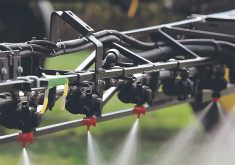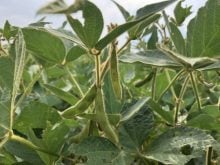The soybean aphid, a troublesome Asian immigrant that first appeared in North America less than a decade ago, could add to disease headaches already facing potato growers.
That’s because of its documented ability to transmit potato virus Y (PVY) from plant to plant as it feeds on the juices of vines and leaves.
PVY, which shrinks tubers and reduces yields, is a worldwide problem. It is particularly a concern for seed growers because even a low incidence can result in seed lot rejection.
A new strain of the virus was recently confirmed in one production area of Manitoba.
Read Also

Fall rye hits record high in Manitoba
Winter cereals 2025: More Manitoba fields grew fall rye in 2025 than ever before, but winter wheat slipped and, while spring stand survival was good, drought took its toll
Data from Minnesota shows that the little yellow bug also likes potatoes and can spread the virus from plant to plant.
However, despite growing numbers of soybean aphids in Manitoba fields in recent years, that hasn’t happened in the province yet.
“It’s increasing, and it is a potential vector for PVY, but we’re not finding it in potato fields at the moment,” said Brent Elliot, a Manitoba Agriculture entomologist.
On soybeans, the aphid can be easily controlled with insecticides. However, if it does at some future point take a liking to Manitoba’s spuds, simply killing the aphids would probably be a futile exercise. That’s because just one feeding is enough to transmit the virus to the potato plant.
“Any aphid can carry PVY on its mouth parts, but the reason we’re so hyped on the soybean aphid is that it can reproduce in such high numbers,” said Elliot.
The action threshold for soybeans is about 250 aphids per soybean plant. Since the bugs are small, their numbers must reach around 500 per plant before inflicting economic damage to the crop.
“You can manage these things fairly easily in soybeans because it’s not a virus concern that they are worried about. They just have to spray them out,” he said.
But on potatoes, “all they need to do is probe the plant once and they can transmit the virus,” he added.
Debra McLaren, a crop production pathologist at the Agriculture Canada research station in Brandon, is working on a mineral oil treatment that could prevent aphids from spreading PVY in potatoes.
The mineral oil has not been registered in Canada, however, it is routinely used in virus management systems in the north-central area of the United States.
In 2007, studies in Manitoba found that applications of mineral oil, which due to its stickiness and viscosity clogs the mouth parts of the aphids, reduced the spread of PVY by 33 percent and had no effect on potato yield.














